Adrian Jarabo
Volumetric Primitives for Modeling and Rendering Scattering and Emissive Media
May 24, 2024



Abstract:We propose a volumetric representation based on primitives to model scattering and emissive media. Accurate scene representations enabling efficient rendering are essential for many computer graphics applications. General and unified representations that can handle surface and volume-based representations simultaneously, allowing for physically accurate modeling, remain a research challenge. Inspired by recent methods for scene reconstruction that leverage mixtures of 3D Gaussians to model radiance fields, we formalize and generalize the modeling of scattering and emissive media using mixtures of simple kernel-based volumetric primitives. We introduce closed-form solutions for transmittance and free-flight distance sampling for 3D Gaussian kernels, and propose several optimizations to use our method efficiently within any off-the-shelf volumetric path tracer by leveraging ray tracing for efficiently querying the medium. We demonstrate our method as an alternative to other forms of volume modeling (e.g. voxel grid-based representations) for forward and inverse rendering of scattering media. Furthermore, we adapt our method to the problem of radiance field optimization and rendering, and demonstrate comparable performance to the state of the art, while providing additional flexibility in terms of performance and usability.
Virtual light transport matrices for non-line-of-sight imaging
Mar 23, 2021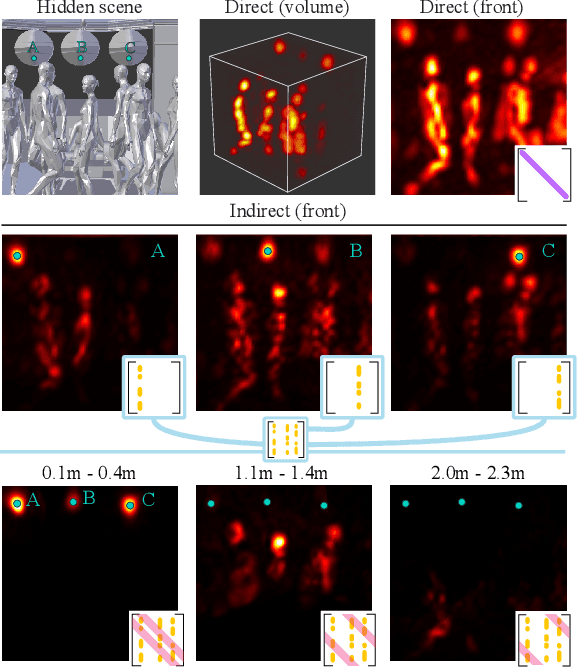
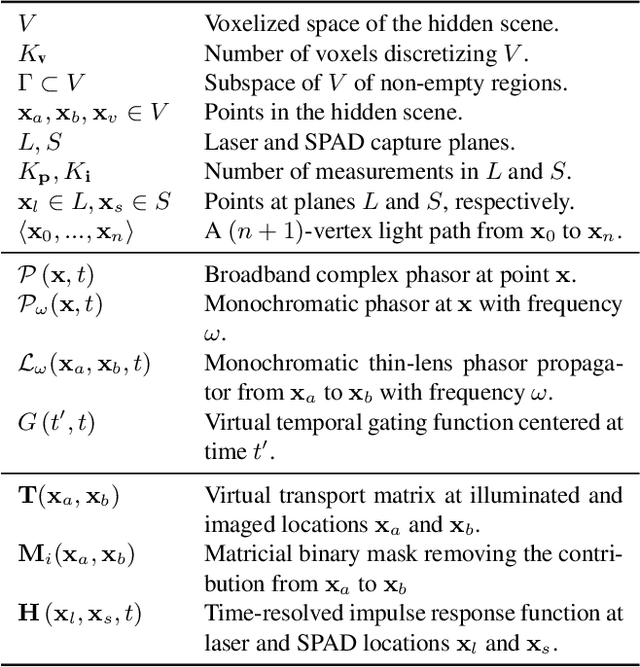
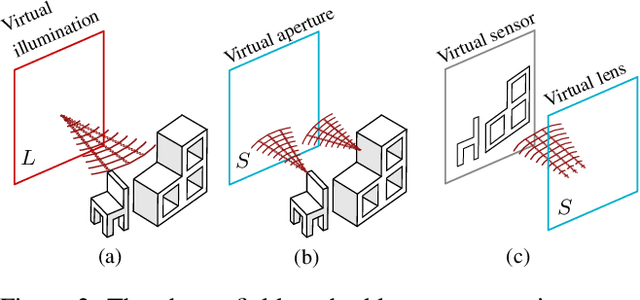
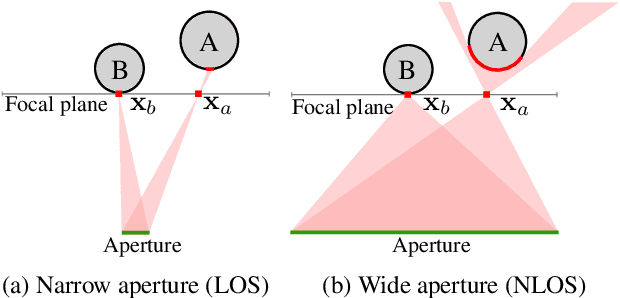
Abstract:The light transport matrix (LTM) is an instrumental tool in line-of-sight (LOS) imaging, describing how light interacts with the scene and enabling applications such as relighting or separation of illumination components. We introduce a framework to estimate the LTM of non-line-of-sight (NLOS) scenarios, coupling recent virtual forward light propagation models for NLOS imaging with the LOS light transport equation. We design computational projector-camera setups, and use these virtual imaging systems to estimate the transport matrix of hidden scenes. We introduce the specific illumination functions to compute the different elements of the matrix, overcoming the challenging wide-aperture conditions of NLOS setups. Our NLOS light transport matrix allows us to (re)illuminate specific locations of a hidden scene, and separate direct, first-order indirect, and higher-order indirect illumination of complex cluttered hidden scenes, similar to existing LOS techniques.
Virtual Wave Optics for Non-Line-of-Sight Imaging
Oct 17, 2018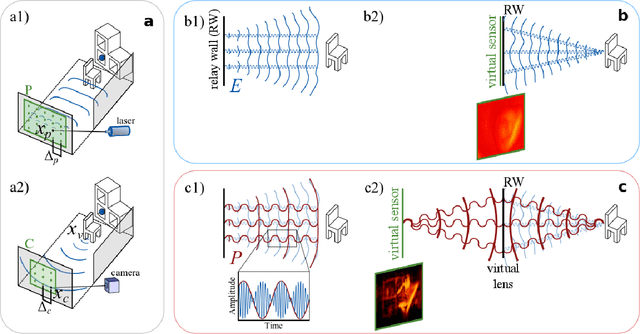

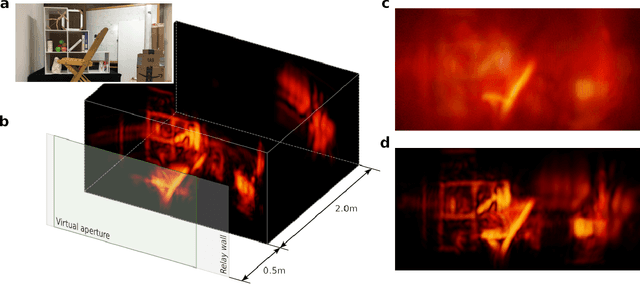

Abstract:Non-Line-of-Sight (NLOS) imaging allows to observe objects partially or fully occluded from direct view, by analyzing indirect diffuse reflections off a secondary, relay surface. Despite its many potential applications, existing methods lack practical usability due to several shared limitations, including the assumption of single scattering only, lack of occlusions, and Lambertian reflectance. We lift these limitations by transforming the NLOS problem into a virtual Line-Of-Sight (LOS) one. Since imaging information cannot be recovered from the irradiance arriving at the relay surface, we introduce the concept of the phasor field, a mathematical construct representing a fast variation in irradiance. We show that NLOS light transport can be modeled as the propagation of a phasor field wave, which can be solved accurately by the Rayleigh-Sommerfeld diffraction integral. We demonstrate for the first time NLOS reconstruction of complex scenes with strong multiply scattered and ambient light, arbitrary materials, large depth range, and occlusions. Our method handles these challenging cases without explicitly developing a light transport model. By leveraging existing fast algorithms, we outperform existing methods in terms of execution speed, computational complexity, and memory use. We believe that our approach will help unlock the potential of NLOS imaging, and the development of novel applications not restricted to lab conditions. For example, we demonstrate both refocusing and transient NLOS videos of real-world, complex scenes with large depth.
Fast Back-Projection for Non-Line of Sight Reconstruction
Jun 20, 2017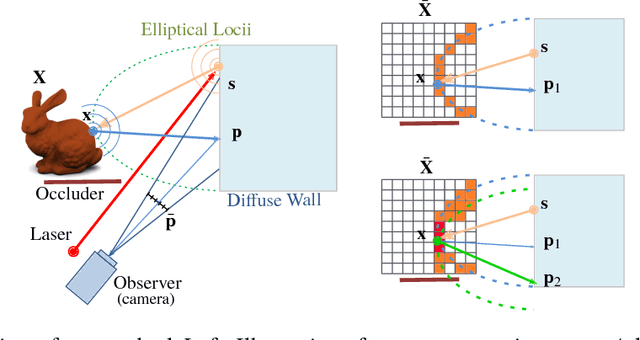
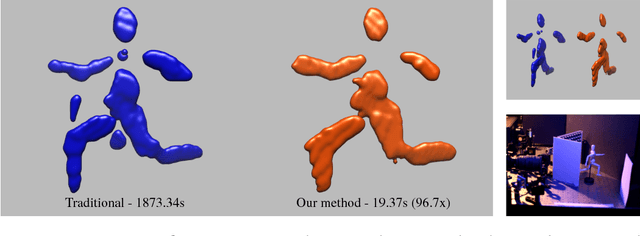


Abstract:Recent works have demonstrated non-line of sight (NLOS) reconstruction by using the time-resolved signal frommultiply scattered light. These works combine ultrafast imaging systems with computation, which back-projects the recorded space-time signal to build a probabilistic map of the hidden geometry. Unfortunately, this computation is slow, becoming a bottleneck as the imaging technology improves. In this work, we propose a new back-projection technique for NLOS reconstruction, which is up to a thousand times faster than previous work, with almost no quality loss. We base on the observation that the hidden geometry probability map can be built as the intersection of the three-bounce space-time manifolds defined by the light illuminating the hidden geometry and the visible point receiving the scattered light from such hidden geometry. This allows us to pose the reconstruction of the hidden geometry as the voxelization of these space-time manifolds, which has lower theoretic complexity and is easily implementable in the GPU. We demonstrate the efficiency and quality of our technique compared against previous methods in both captured and synthetic data
A Computational Model of a Single-Photon Avalanche Diode Sensor for Transient Imaging
Feb 23, 2017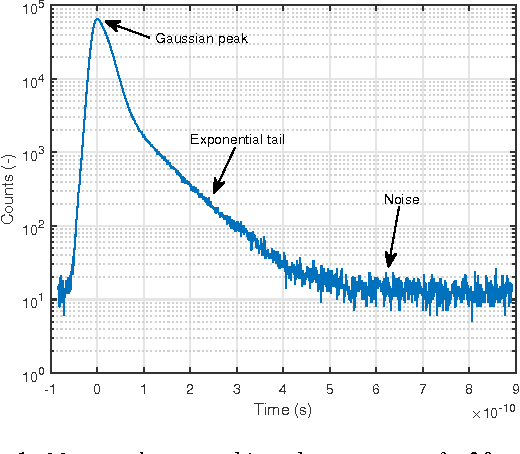
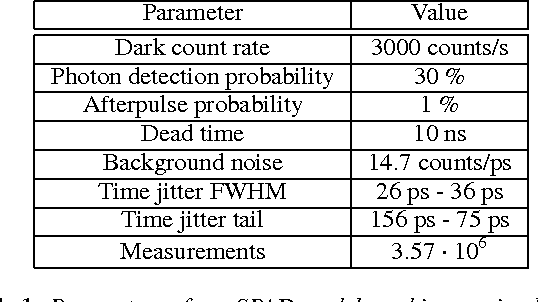
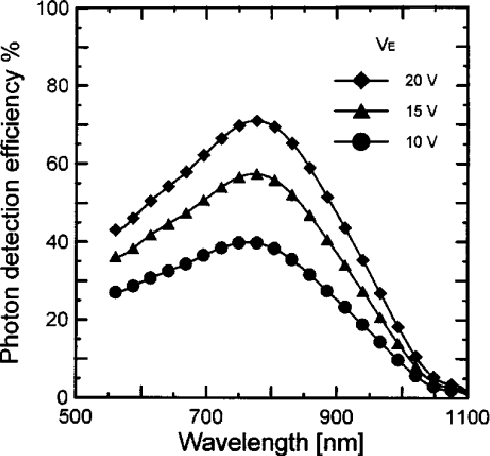
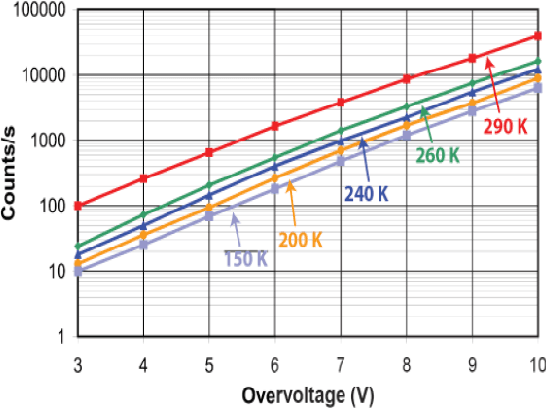
Abstract:Single-Photon Avalanche Diodes (SPAD) are affordable photodetectors, capable to collect extremely fast low-energy events, due to their single-photon sensibility. This makes them very suitable for time-of-flight-based range imaging systems, allowing to reduce costs and power requirements, without sacrifizing much temporal resolution. In this work we describe a computational model to simulate the behaviour of SPAD sensors, aiming to provide a realistic camera model for time-resolved light transport simulation, with applications on prototyping new reconstructions techniques based on SPAD time-of-flight data. Our model accounts for the major effects of the sensor on the incoming signal. We compare our model against real-world measurements, and apply it to a variety of scenarios, including complex multiply-scattered light transport.
Recent Advances in Transient Imaging: A Computer Graphics and Vision Perspective
Nov 03, 2016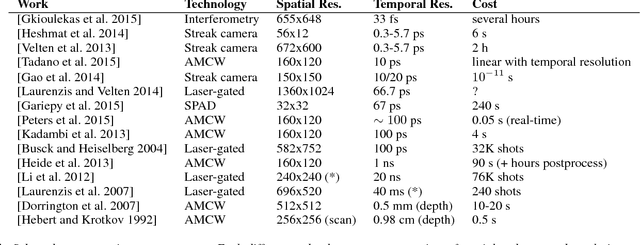
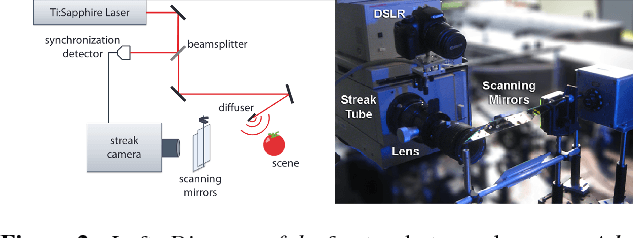
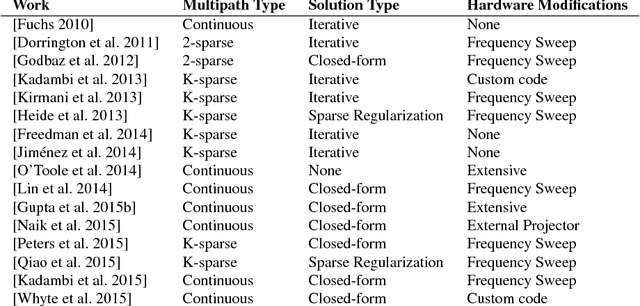
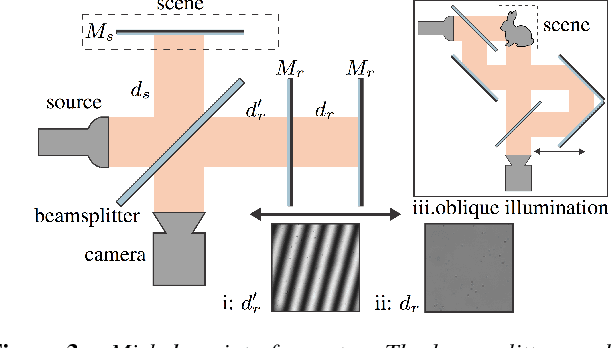
Abstract:Transient imaging has recently made a huge impact in the computer graphics and computer vision fields. By capturing, reconstructing, or simulating light transport at extreme temporal resolutions, researchers have proposed novel techniques to show movies of light in motion, see around corners, detect objects in highly-scattering media, or infer material properties from a distance, to name a few. The key idea is to leverage the wealth of information in the temporal domain at the pico or nanosecond resolution, information usually lost during the capture-time temporal integration. This paper presents recent advances in this field of transient imaging from a graphics and vision perspective, including capture techniques, analysis, applications and simulation.
 Add to Chrome
Add to Chrome Add to Firefox
Add to Firefox Add to Edge
Add to Edge